|
This is the easiest guide you’ll ever read. If I’m being completely honest, it’s taken me literal years to learn how to air-dry my hair. It wasn’t until I accepted the fact that successful air drying requires a cocktail of products (lol, trust me when I say those “air-dry creams” won’t actually give you Selena Gomez–worthy waves on their own) plus a handful of techniques (there’s way more scrunching, gliding, twisting, and smoothing than you’d think), that I was finally able to air-dry my straight-ish, poofy-ish hair at home. Why is why I can genuinely say that learning to air-dry your hair isn’t, in fact, an impossible task, as long as you (a) take your time—which, like, what else are you doing right now?—and (b) follow the right equation for your exact hair texture. And to help you, I rounded up the easiest ways to air-dry everything from straight, fine hair to coarse coils, along with the exact products you need on your team. So put down the hot tools, pour yourself a glass (or three) of wine, and prepare to come out of quarantine with your air-dry routine on lock. How to air-dry wavy hair In theory, naturally wavy hair should be one of the easiest textures to air-dry, but thanks to the fact that not all waves are created equally (@ my super-puffy and undefined-as-hell waves—if you can even call them that), the process definitely calls for a little technique. Here’s what you’ll need: This content is imported from Instagram. You may be able to find the same content in another format, or you may be able to find more information, at their web site.
How to air-dry coily hair The key to air-drying dehydrated, pulled-out coils? Adding back crazy levels of moisture and definition throughout the process. Here’s what your setup should look like:
How to air-dry fine, flat hair If you usually rely on a blow-dryer to give your fine, flat hair tons of lift and volume, you’ll love how easy this air-dry routine is. Prepare to get mega volume without all the heat damage: This content is imported from Instagram. You may be able to find the same content in another format, or you may be able to find more information, at their web site.
How to air-dry curly hair If your curls tend to look a little ~fluffy~ and undefined when you air-dry your hair, you need to make sure you’re using leave-in products that build bounce and shape (oh, and some extra shine doesn’t hurt either). Here’s what you gotta know:
How to air-dry straight hair You know those soft, bendy waves you always see on your Instagram feed? Yeah, you don’t need a flatiron or hair dryer to re-create them—just follow these tricks and air-dry some movement into your straight hair: This content is imported from Instagram. You may be able to find the same content in another format, or you may be able to find more information, at their web site.
This was found on Cosmopolitan.com Saw palmetto is a popular herbal remedy. Some people use it to reverse or prevent hair loss, but there is not yet enough scientific evidence to confirm that it is effective.
Serenoa repens, or saw palmetto, is a small palm tree that grows in the United States. Saw palmetto is native to the West Indies, and Native Americans have used it as a healing plant for some time. In this article, we examine the research into saw palmetto and hair loss. We also explain how to use saw palmetto and discuss other possible remedies for hair loss. Does it Work? To date, scientific research on saw palmetto for hair loss remains limited. According to the National Center for Complementary and Integrative Health (NCCIH), there is not enough scientific evidence to support people using saw palmetto for any health condition. However, some researchers have looked into saw palmetto and hair loss. According to a 2012 study, saw palmetto might inhibit an enzyme called 5-alpha reductase. A medication called finasteride (Proscar) uses this mechanism to treat hair loss in males. By inhibiting 5-alpha reductase, finasteride blocks the conversion of testosterone to dihydrotestosterone, which is the hormone responsible for male pattern hair loss. Saw palmetto may also have anti-inflammatory effects on the body, which could offer protection from some causes of hair loss. In a small 2002 study, researchers gave 10 males with androgenetic alopecia a supplement that contained both saw palmetto and beta-sitosterol. The researchers noted improvements in 6 of the 10 males. As this study was very small, additional research is necessary to support these findings. In a 2012 study, researchers enrolled 100 males with mild-to-moderate androgenetic alopecia. Over 2 years, one group took 320 milligrams (mg) of saw palmetto each day, while the other group received 1 mg of finasteride daily. In the end, 38% of those who took saw palmetto had an improvement in their hair loss, compared with 68% of those who took finasteride. This finding suggests that both treatments had an effect but that finasteride was more effective. The researchers also noted that the more severe the hair loss, the less likely saw palmetto was to work. While smaller studies have shown that saw palmetto might have promise as a treatment for hair loss, there is a need for additional, larger scale studies. How to use saw palmetto Saw palmetto is available in a variety of preparations, including oral supplements and hair care products, such as shampoos and conditioners. As researchers have not proven that saw palmetto prevents or treats hair loss, there is no official recommended dosage. An article in the Journal of Cutaneous and Aesthetic Surgery cites a recommended dosage of 160 mg twice daily in the form of tablets. Researchers have also used this dosage in a clinical trial setting. There is no extra guidance on how to use saw palmetto, such as whether to take it with or without food. Side effectsSaw palmetto does not usually cause significant side effects. The most common side effects are headaches and stomach upset. According to the NCCIH, research has not shown that saw palmetto interacts with any medications. However, it is still a good idea for people to talk to their doctor before taking saw palmetto in case new information about interactions becomes available. Another concern for males taking saw palmetto is that the supplement can reduce levels of prostate-specific antigen (PSA). One article notes that levels of PSA may decrease by 50% after 6–12 months of taking saw palmetto. Doctors test PSA levels during prostate cancer screening, so saw palmetto could make these tests less accurate. Other remedies for hair loss A person’s diet can have an important effect on keeping the skin and hair healthy. Specific foods can help promote the growth of the hair and improve its strength and volume. These foods include eggs, Brazil nuts, and fatty fish. The American Academy of Dermatology advise people to ensure that they get enough of certain nutrients in their diet. These include protein and iron, which the body uses to build strong, healthy hair. Eating too few calories may also affect the growth and health of the hair. Learn about the best foods for hair growth here. Few studies have looked into other home remedies for hair loss. However, there is some evidence to suggest that scalp massage and aromatherapy may help. Like saw palmetto, pumpkin seed oil is a 5-alpha reductase inhibitor. A 2014 study found that males who took 400 mg of pumpkin seed oil daily for 24 weeks had an average hair count increase of 40%. However, more research is necessary before researchers can determine the effectiveness of this supplement. Many doctors will recommend making lifestyle changes relating to hair care. In some people, these steps may help prevent further hair loss:
Summary Saw palmetto is a supplement that may help the hair grow. However, the current evidence to support the use of this treatment is limited, and official bodies do not recommend it. Saw palmetto has few side effects, so some people may wish to try taking it despite the lack of evidence. People can buy saw palmetto supplements online. This supplement can affect PSA levels, so people should always tell their doctor when they take this supplement. From MedicalNewsToday During these days of stay-at-home orders and social distancing, you may be finding yourself in a position of needing some new Do-It-Yourself (DIY) inspiration. And, while your hair maintenance may be categorized as “non-essential” in some circles, we all know nothing is more essential than self-care, right? That’s why I’m sharing these eight amazing and easy-to-follow DIY hair mask recipes you can do right now, from home. So, let’s get started. Banana Mask for Hair Growth
For those of you in a “grow-out” phase with your hairstyle, you’re going to want to give this Banana Mask a try. It takes only four simple ingredients:
When you’re ready, mix all the ingredients in a small bowl and apply to wet hair. The mask should sit on your hair for about 10-15 minutes. One critical thing to remember with this one is DO NOT rinse with warm/hot water unless you want cooked eggs in your hair. The banana will moisturize, the egg gives your hair protein, and the oil helps fight the frizz. I can’t wait to give this one a try, and since I love lavender oil, this one’s at the top of my list. Coconut Oil Mask for Shiny Hair If super shiny, lustrous locks are what you’re after, then this DIY hair mask is the one for you. It uses just three ingredients you most likely have in your cupboard right now:
The coconut oil is a natural detangler and promotes hair growth. It works best on dry hair as it can make your hair feel oily if you use too much or are naturally prone to oily hair. No need to wet your hair for this one. Just melt the coconut oil and honey together in the microwave or on the stovetop. Add the vinegar and stir, making sure it cools down so it’s warm to the touch. Then, apply to your hair with a brush and let it sit for about 20 minutes. To remove, rinse with shampoo and warm water. Aloe Vera Dry Scalp Care Mask Some of you may be like me and suffer from time to time with a dry, flaky scalp. I find this even more true on day two (2) after I’ve washed my hair. If this sounds like you, then you can use this DIY recipe from to fight those dry, itchy spots. The recipe includes:
Did you know aloe vera is a natural antifungal agent? It sure is. It can help relieve your itchy scalp that leads to dandruff. The turmeric helps give your hair strength and can stimulate blood circulation in your scalp, helping your hair follicles stay healthy. Finally, the rosemary and tea tree oils provide regenerative and anti-inflammatory properties that are great for a dry scalp. The “Grease Release” Oat Mask After a long week of self-isolation, nothing feels better than some self-pampering with this DIY, all-natural oat mask for your hair. Simply combine:
Put the ingredients together in a blender or food processor and mix until they form a paste. Put the paste on your scalp and hair for 15 minutes for a mask that helps your hair release its natural oily build-up. Rinse and wash for a fresh, clean feeling. Avocado Nourishing Hair Mask Avocados are one of my all-time favorite foods to eat, and, now, I have another reason to love them. This super simple DIY hair mask uses this superfood for a whole new purpose. Use these ingredients:
You’ll want to mash the avocado in a small bowl until there are no lumps, then add the yogurt and oil to the mix to form the mask. Smooth the mixture on your hair and scalp and leave in place for 30 minutes to get the full benefit of this rich mask. When done, you can wash with shampoo and rinse to remove all remnants of the mask. Your hair will love it. Mayonnaise Wonder Treatment for Dry Hair I’m all about simplicity, and it doesn’t get any simpler than this one-ingredient wonder of a hair mask treatment that includes:
All you have to do is apply the one (1) cup (or less if you have short hair) of mayo of your choice to your dampened hair starting at your scalp and working all the way to the ends. Leave the mask on your hair for 20 minutes then wash thoroughly for glossy, healthy-looking hair. Applying this DIY hair mask once a week can make a world of difference to dry, damaged hair. If you want a deeper treatment, you can apply the mayo to your dry hair, wrap with a warm towel and relax for 20 minutes, then rinse. Yogurt Mask for Color-Treated Hair This luxurious and silky smooth mask is the perfect way to give your color-treated or chemically damaged hair a pick-me-up. According to hair gurus, you’ll need:
Combine all the ingredients in a small bowl until smooth and creamy. Apply the mask to your hair, starting at your scalp and massaging to your ends for about five (5) minutes. If you have long hair, pile it up into a bun and put it under a shower cap, letting the mask soak for about an hour. Then, rinse and shampoo. After just one treatment, your hair should feel soft and supple. Honeyed Coffee Scalp and Hair Mask This DIY hair mask is a gem! The three (3) ingredients you’ll need are:
Mix all three of the above ingredients to form a rich paste that you apply to your scalp and leave in place for an hour. Then rinse and shampoo for silky, smooth hair and an energized scalp. But remember, coffee can be used as a semi-permanent hair dye for brown-colored hair, so try this one in a small area first to make sure it has the results you are seeking. I hope you find one of the above DIY hair mask recipes to your liking. By taking a little time to pamper yourself, you’ll feel and look great whether you’re in self-isolation or preparing for when we can all be together again. In the meantime, stay safe and find joy in the little things, my friends. This helpful information is from The Right Hairstyles Some people fill up on trashy reality TV show, others indulge in a pint of ice cream. The guilty pleasure going around at Mane Addicts HQ, on the other hand? Picking split ends. Either through twirling or pulling, any chance to separate the dry, drab-looking dead ends gets us giddy. Our old habits would’ve died hard, but we’re sensible, and decided to seek help from an expert. Ahead, the reason why you shouldn’t pick split ends, according to Lee Rittiner, executive stylist at Alen-M Salon in Los Angeles, who keeps a fresh cut on some of our favorite Instababes, including Sazan Hendrix and Rocky Barnes.
What exactly are split ends? How are they formed? A split end is just what it sounds like. The end of a hair strand that’s damaged, resulting in the strand separating into two or more fragments. Split ends are the result of damage to your hair, either from heat, combing, washing, coloring or even wearing a ponytail. When you damage your hair, the outer layer (the cuticle) starts to peel away, leaving hair frizzy looking and more prone to breakage and splitting. So, how bad is it to pick split ends? You can damage your hair further. I describe it to clients like a thread on a knitted sweater—once you pull the thread it will keep unraveling and ruin the garment. Pulling a split end works the same way…so hands off! Will picking your split ends create more split ends? The damage to your hair will come when you tear away at the split ends. Pulling them apart actually makes the problem much worse. Instead of having small splits, you could end up with long lengths of hair that have been thinned as a result of pulling the split end apart. This thinned out hair shaft is more apt to tangle. It may also break off entirely, leaving you with shorter hair that is more prone to even more split ends. Any type of “break” to the hair is not “clean” or blunt like it would be from a scissor cut. Some people acquire hair so damaged that a single hair shaft has multiple splits on it. Do you slow hair growth when you pick split ends? Yes, because it will continue breaking which will not allow the hair to grow longer. What styling products would make your split ends worse? Anything with a high alcohol content will amplify dryness since split ends are looking for hydration. You can find the full article at Mane Addicts 5/2/2020 0 Comments Shave it or save it?Should you cut your own hair, cover up your roots or forgo shampoo for the coming months? And what about growing out your pubic hair? Here’s everything you need to know about home grooming. Given that we are housebound amid a global crisis, you may think that a short back and sides would be the last thing on anyone’s mind. But you would be wrong. Physical distancing has not stopped people around the world, from Phillip Schofield to Malala Yousafzai, reaching for the scissors – with varying degrees of success. Since the temptation to give yourself, or your loved ones and housemates, a quick cut appears matched only by the desire to bake banana bread, here are a few points to consider. Should you cut your own hair? Hairdressers advise regular appointments to keep your hair in good condition and your cuts looking fresh, so it is little wonder that so many of us are keen to keep this up. But most stylists have one word of advice: don’t. “I feel sorry for all the stylists who, after this, will be dealing with a lot of DIY disasters,” says Keri Daniel, the owner of Danique Hairdressing in Leicester. “If you really have to, then it’s worth investing in the right tools – even a professional would struggle to get a good result using the kitchen scissors. You can get cheap hairdressing scissors and cutting combs online – even razors – and they’ll give you a better finish.” What about fringes? Being poked in the eye by your own fringe is no fun. Many fringe-wearers will have already experimented with DIY trims, but, if you are new to this, the advice is to cut upwards, not across, using just the tips of the scissors. Daniel goes further: “I’d suggest using a wide-tooth comb, pulling the hair down to the eyebrows and then lifting it slightly [before cutting]. Any lifting of the fringe will give it a slight graduation and make it look softer. This way, even if you do make a mistake, it’s unlikely to look horrific.” Should you just shave it all off? With hairdressers and barbers closed, some people – Riz Ahmed and David Beckham among them – have opted to simply lop off the lot. It is quite the lockdown look, but it is not as simple as you might hope. “You need to make sure that the guard you put on the clipper is secured properly – otherwise you can go from a grade four to a grade zero by accident, and there’s no fading that out,” says the salon owner and celebrity stylist Jamie Stevens. “You may think you can just do grade three all over, but the parietal bridge and the occipital bone [towards the back of the head] protrude slightly, and a few days later it will start to have a weird shape because these areas should be slightly tapered.” Should you do it yourself or hand the scissors to someone you live with? “Think about what’s best for your household, because you have to live with these people,” warns Daniel. Like most professionals, hairdressers have a knack of making their job look easier than it is. “If you cut your own hair, you’ll need one mirror in front and one behind you,” says Stevens. “I’ve seen people using their phones, but it gets a bit tricky because you need to hold that, the comb, the scissors and the clippers. Get help if you can.” How do you cut kids’ hair? “The biggest challenge when cutting children’s hair is that they don’t like to sit still,” says Kelly V, the owner of Pixal-Rose Hair Design, a vegan salon in Swindon, who suggests keeping them occupied with a tablet or a book. For short hair, a simple cut with clippers is advised. For long hair, “brush the hair down, have the head tilted forward and cut the very, very ends off”, she says. “Don’t attempt anything too drastic.” What about your roots? This can be the biggest giveaway that you are overdue a trip to the salon, but there are better solutions than home-dyeing. “A zigzag parting can help disguise that regrowth line and, depending on the colour of your hair, mascara can be a great way to cover up greys,” says Stevens. “Or just have a bit of fun – we put a luminous green feather in one parting. It looked like Billie Eilish’s green roots.” Kelly V says the biggest problem with DIY dyeing is when those with blond hair switch to brunette to avoid root regrowth. “The trend is to go for ashy, cool, brunette colours, but this will simply leave your blond hair khaki,” she says. Instead, “you’ll need to select a dye that contains a lot of red tones [to get the colour you want]. Also, always do the patch test.” Daniel suggests visiting your salon’s website to find out which products they used and investing in those. “You may be able to buy them through the salon, which can be a great way to support them while they are closed,” she adds. “Dyes that you might buy in the supermarket are not professional products, and it can make it a lot harder when it comes to colouring in the future.” How should you care for afro hair? “An inch of growth in afro hair doesn’t make as much difference,” says Stevens, whose salon specialises in afro hair. “It’s easier to disguise that it’s overdue a cut. Relaxed hair will have curly roots, but I would never recommend using a home relaxant – you will get snappage. You could go through it with straightening irons, but it would be very time-consuming. I would suggest just wearing your hair up.” What if you run out of shampoo and conditioner and can’t get to the shops? Join the “no-poo” movement and break free from the shackles of commercial haircare! Well, it is one option – and the lockdown offers a chance to wait out the initial greasy period in relative privacy. Otherwise, shower gel can substitute for shampoo if you are desperate, according to Stevens, while mayonnaise, avocado or coconut oil can replace conditioner. “If you look at what branded products use in their ingredients, you can get an idea of the kitchen cupboard alternatives,” says Daniel. Of course, you are probably washing your hair far more than you need to anyway. How often do you need to bother washing your hair when no one can see? “Realistically, you don’t need to wash your hair more than once a week, unless you are doing a sport or have a job in a kitchen,” says Daniel. For those of us who like to wash our hair daily, this may seem like a big ask. But she assures me it is possible. “On the third day, you could spritz it with some water and blow-dry again to give it a bit of lift. Stay away from the straighteners if you can. On the fourth day, you can start to wear your hair up. Dry shampoo and texture sprays can also give unwashed hair a little bit more life. You’re with your family and loved ones, staying home – it’s the best chance to give your hair a rest.” What about body hair – is it time to grow it out? Removal of body hair – particularly pubic hair – is often best left to the professionals. While shaving your own legs may be straightforward, waxing your bikini line is another matter. So, is it time to go au naturel? “We’ve had lots of inquiries from clients who are midway through laser hair removal courses asking what they should do,” says Dr Chloë Butler, the founder of the Chloë Edit clinic in Worcestershire. “We advise not attempting DIY waxing, as it can be quite tricky unless you have the right equipment and patience.” While trimming or shaving pubic hair may seem straightforward, Butler believes some people would be better off leaving well alone. You may even discover you prefer your new look.
“Make the right choice based on the type of skin and hair you have, not on whatever style is ‘trending’,” says Butler. “If you have a thicker hair follicle, you may be more prone to ingrown hairs or a shaving rash. If you’ve got oily skin, you may get blocked pores and irritation. Dry skin tends to be thinner and more likely to tear.” Ouch. Is now a good time to experiment with hairstyles? Rather than shaving your head, Stevens suggests men try growing their hair long or cultivating a beard. If you are tempted by a complete restyle, he suggests ordering a wig online: “Walk around the house and see how you feel. What kind of reaction do you get when you’re FaceTiming friends and family?” Daniel believes that, aside from the buzzcut, other hair trends are likely to emerge after the lockdown. “It’s exciting from a hairdressing point of view. People who wanted to grow out their grey hair, or go from being very blond to a more natural colour, have an opportunity to do that.” “Ultimately, chill out,” says Stevens. “Embrace your new hair and, if you’re really that bothered, put a hat or a scarf on.” Shave it or Save it brought to you from The Guardian |
Hair by BrianMy name is Brian and I help people confidently take on the world. CategoriesAll Advice Announcement Awards Balayage Barbering Beach Waves Beauty News Book Now Brazilian Treatment Clients Cool Facts COVID 19 Health COVID 19 Update Curlies EGift Card Films Follically Challenged Gossip Grooming Hair Care Haircolor Haircut Hair Facts Hair History Hair Loss Hair Styling Hair Tips Hair Tools Health Health And Safety Healthy Hair Highlights Holidays Humor Mens Hair Men's Long Hair Newsletter Ombre Policies Procedures Press Release Previous Blog Privacy Policy Product Knowledge Product Reviews Promotions Read Your Labels Recommendations Reviews Scalp Health Science Services Smoothing Treatments Social Media Summer Hair Tips Textured Hair Thinning Hair Travel Tips Trending Wellness Womens Hair Archives
June 2025
|
|
Hey...
Your Mom Called! Book today! |
Sunday: 11am-5pm
Monday: 11am-6pm Tuesday: 10am - 6pm Wednesday: 10am - 6pm Thursday: By Appointment Friday: By Appointment Saturday: By Appointment |
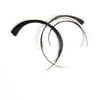
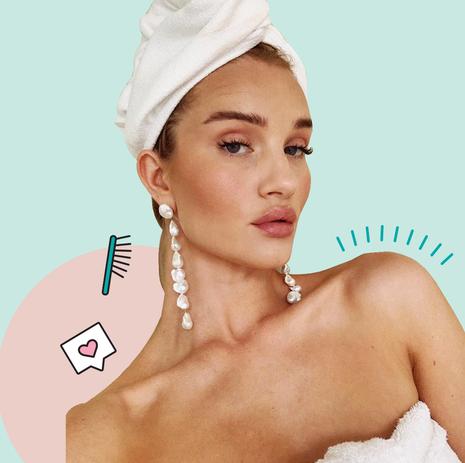
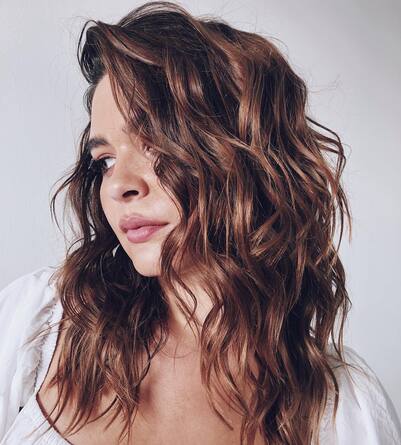
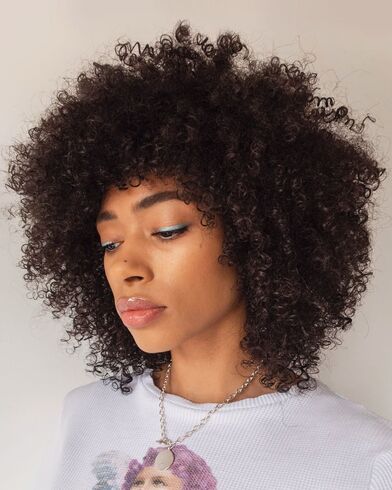
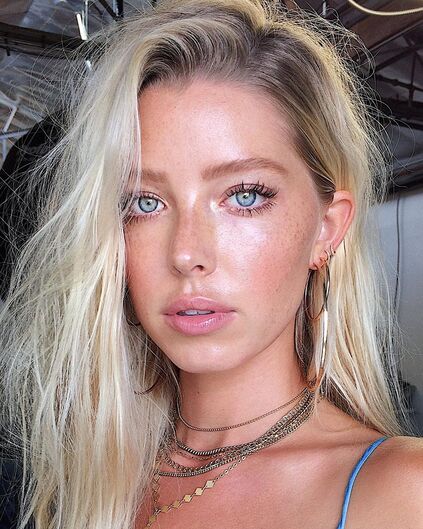

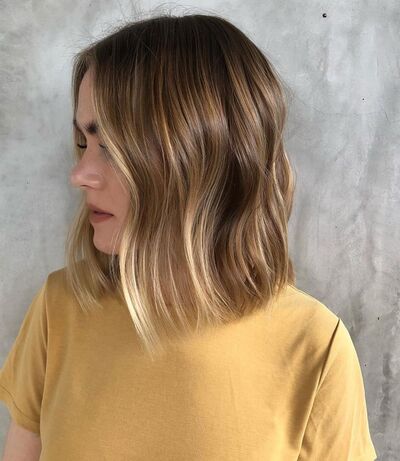







 RSS Feed
RSS Feed